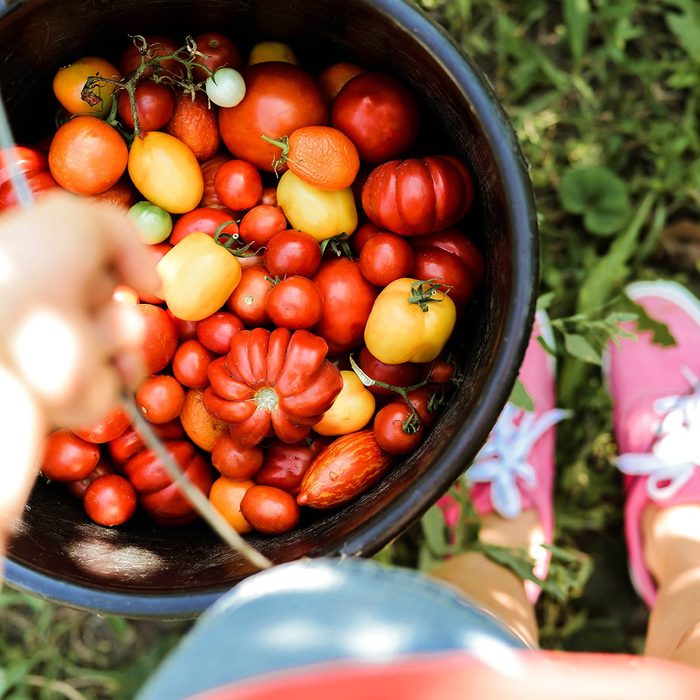
Not Knowing the Difference Between Determinate and Indeterminate Tomatoes
Perhaps the greatest decision to make with your tomato garden is whether you want to plant determinate or indeterminate tomato plants.
Determinate tomato plants grow to a particular height and tend to produce all of their fruit within a short timespan (about three weeks) in the summer. These work well for folks that want to harvest a lot of tomatoes at once for projects like preserving and making tomato sauce.
Indeterminate plants will continue to grow and produce fruit until frost hits. These are great if you want to have access to fresh tomatoes throughout the warm months for BLTs, salads and snacking.
Follow these top tomato growing tips for the utimate crop.
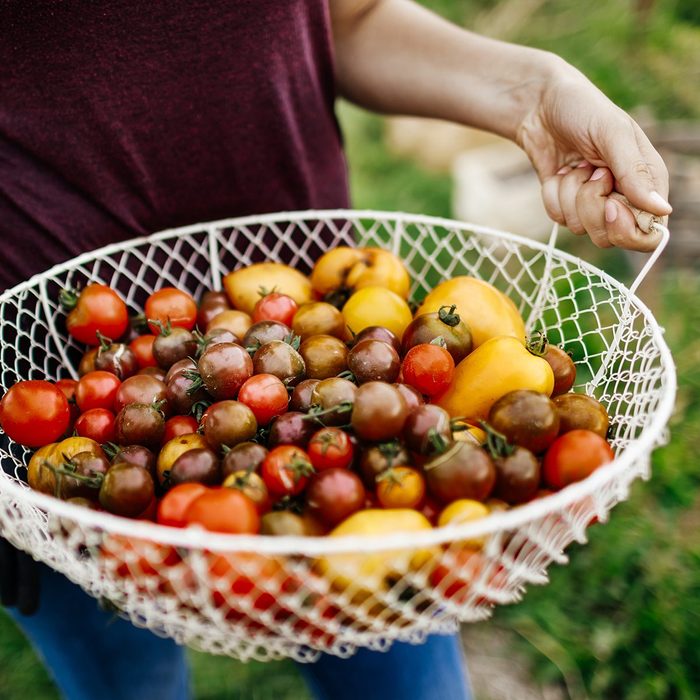
Thinking That All Heirloom Tomatoes Are the Same
The term “heirloom tomato” conjures images of perfectly imperfect tomatoes in all sorts of hues. But don’t think that all heirloom tomatoes are the same. Heirloom is a catchall term for specific tomato varieties that have been passed down by seed over generations. There are lots of heirloom varieties with different shapes, colors and flavor profiles. Read up on the seed packet or plant stake to learn more about what makes that particular variety special.
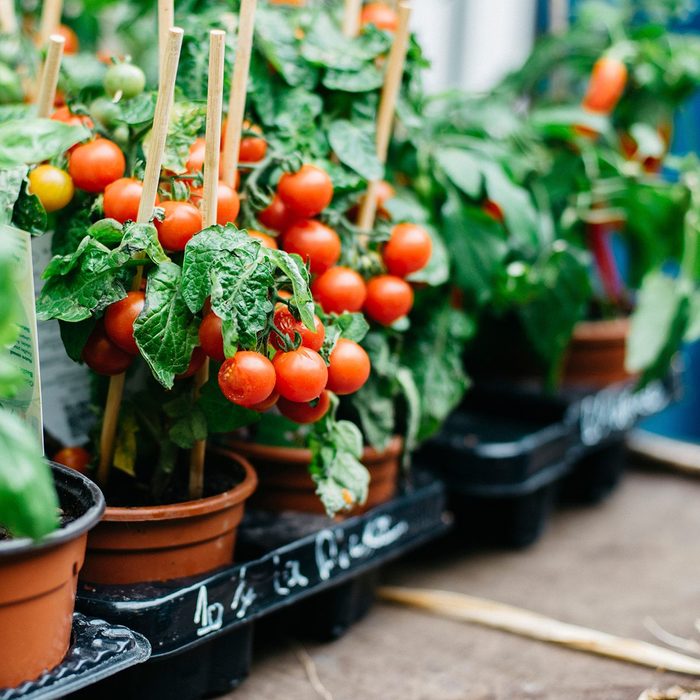
Planting Tomatoes Too Soon
Tomato plants like it warm, so don’t rush to put plants in the ground the second the snow melts. Instead, wait until freezing temperatures are long past. Tomato plants won’t survive a frost, so be sure that the nights don’t get too cold and that the days are warm and sunny to help them grow. Check the first and last frost dates in your area.
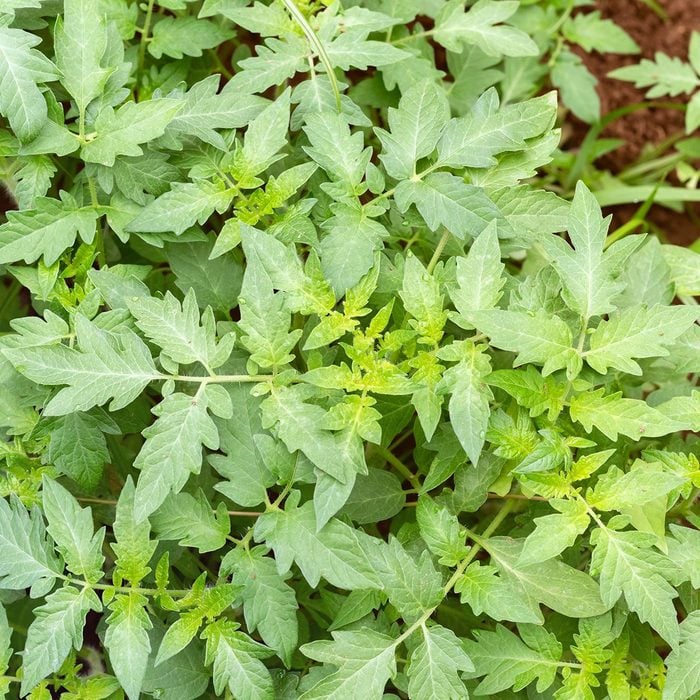
Planting Too Close Together
We know what you’re thinking: more plants = more tomatoes for all your favorite recipes. However, this isn’t always true. Tomatoes need their space in a garden or container. If you crowd a tomato garden, you limit the sun and airflow the leaves can get. If the plants don’t get all the fresh air and sunlight they need, they’ll yield less fruit and can even develop diseases.
So give your tomato plants ample room to grow for best results—about three feet between each plant.
Discover the top 10 best tomatoes to grow.
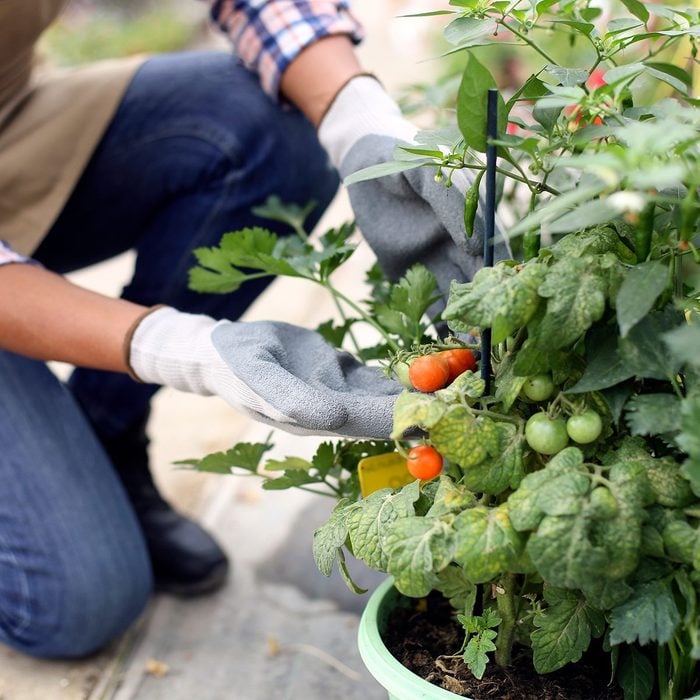
Using Small Pots
When it comes to planting tomatoes in garden containers, remember that bigger is better here. You want the plant to have plenty of room to put down roots and plenty of nutrient-rich soil. Also, larger pots and more dirt can hold moisture for longer, so you don’t have to water as frequently.
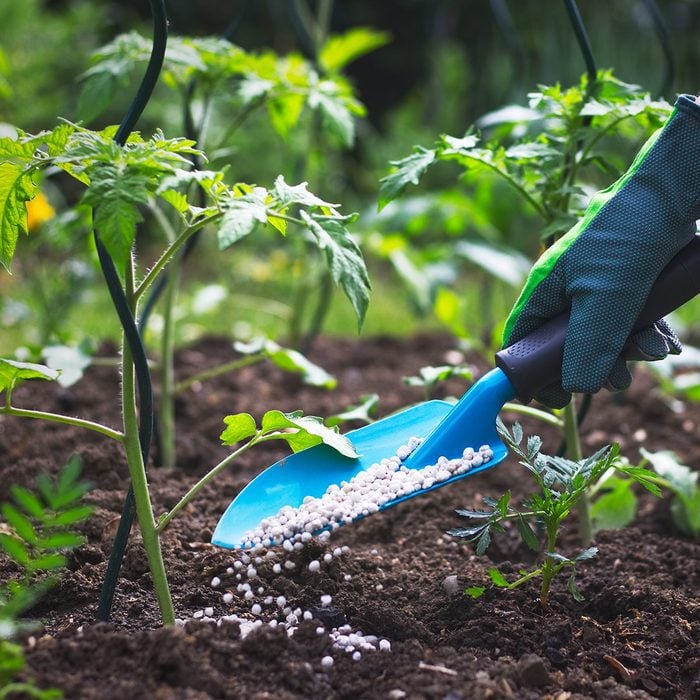
Fertilizing Too Often
Fertilizers can do wonders to boost the growth of plants and give them the healthy soil they need to thrive, however, be mindful when fertilizing tomatoes. Early fertilizing is great for small tomato plants, however, once the season is in full swing, skip the feed. Fertilizing tomatoes in prime growing time encourages the plants to sprout more leaves—not more fruit (and yes, tomatoes are fruits!).
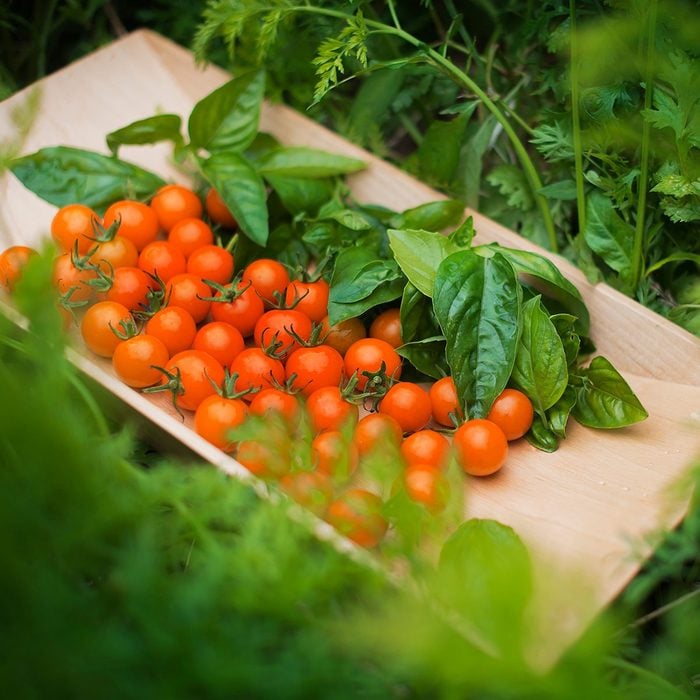
Forgetting About Companion Plants
While companion plants aren’t necessary for thriving, bountiful tomatoes, they can be advantageous. Certain plants, like marigold, amaranth, borage, nasturtium, garlic and basil, help repel pests.
Use your tomato and companion basil harvest to make some delicious recipes.
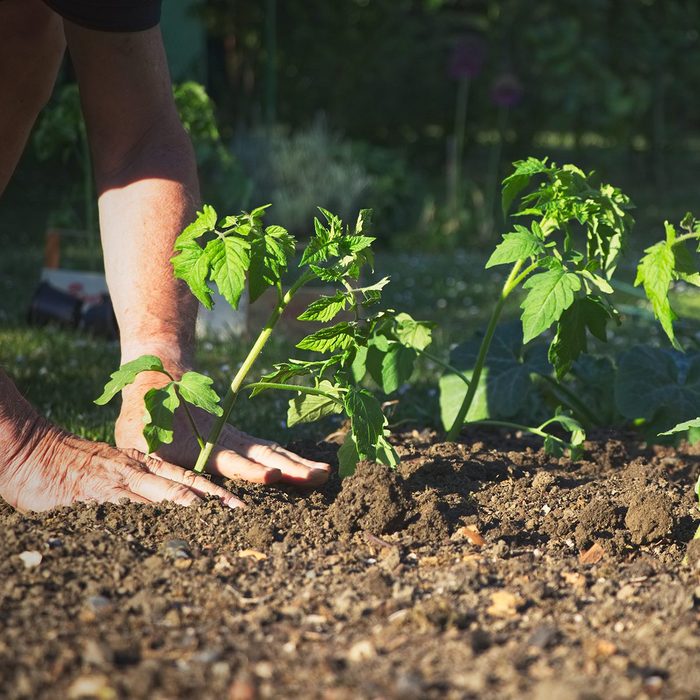
Planting in the Shade
Tomato plants require full sun to stay healthy and produce delicious fruit. A shady spot just won’t work for these plants. If sun is at a premium in your yard, give the tomatoes the best spot. Other veggies like kale, cauliflower, Brussels sprouts, broccoli, beets and carrots can manage a bit of shade.
Follow these tips for saving tomato and veggie seeds from your harvest.
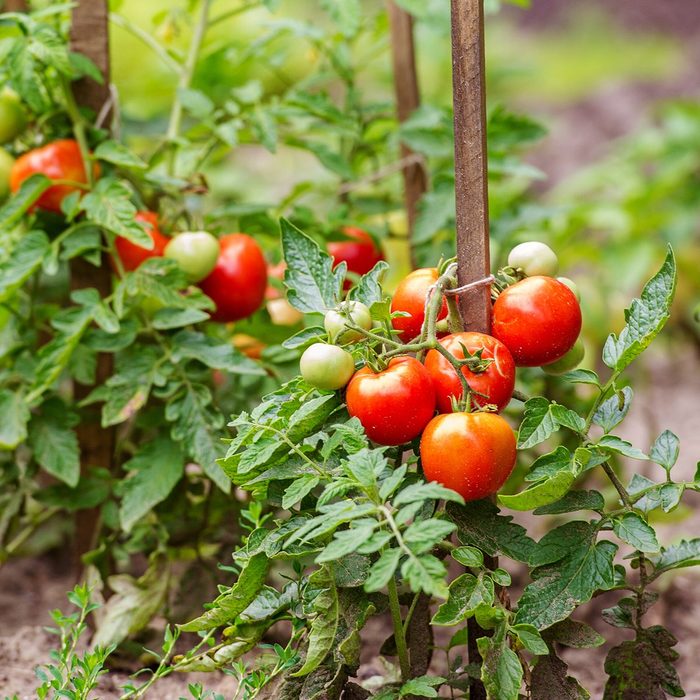
Staking Plants After They’ve Grown Out of Control
Tomatoes are more vine-like than bush-like, so they need the support of stakes or cages. However, don’t make the mistake of staking or supporting tomatoes only after they’ve grown large and leggy. The best time to give tomatoes the support they need is before they really need it. Plus, smaller plants are easier to tie up (no fighting your way through all those leaves).
So stake and support early. You can always add more stakes as the season progresses.
Did you know that you can grow tomatoes indoors?
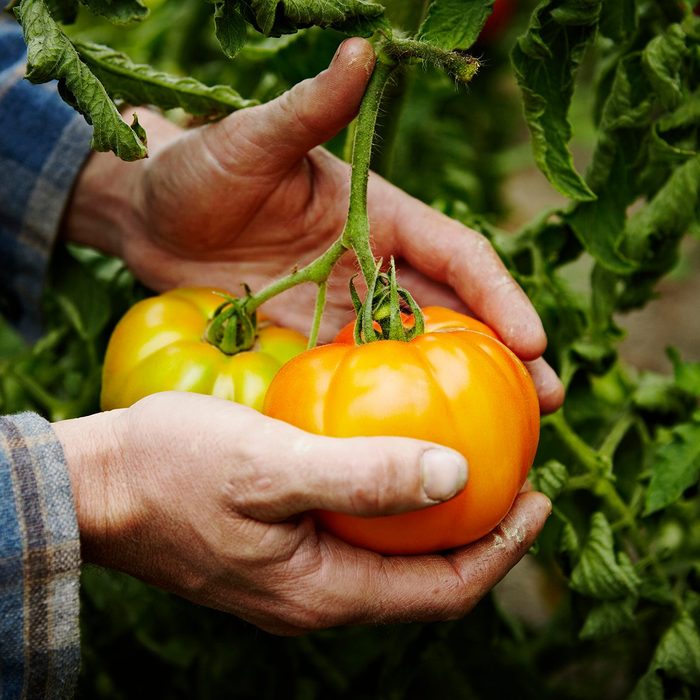
Not Picking Orange Tomatoes (Sometimes)
If you live in a very warm climate, tomatoes won’t ripen to red. According to Burpee, once temperatures get into the 90s, tomatoes will only turn orange. If you know the heat is here to stay, pick the orange tomatoes and let them ripen on your countertop. If you think the heat will break in a few days, just wait it out. Once temperatures drop, those orange tomatoes will turn red quickly and you can harvest.
Check out this guide to veggie-harvest times.
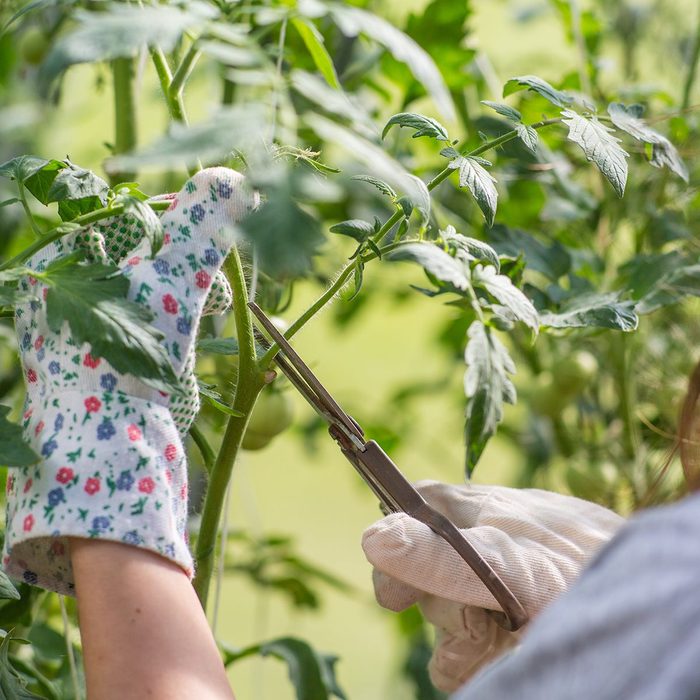
Not Pruning
No matter what, tomatoes tend to get a little leggy—and that’s fine! But don’t forget to prune the plants strategically. Early in the season, trim away small stems (aka suckers) along the base of the plant. This will help focus the plant’s energy into creating a strong stem.
As the growing season comes to a close, trim off the very top of your tomato plant. This will encourage the plant to focus its energy on ripening up the last of the fruit on its limbs rather than growing taller.
Learn how to freeze fresh tomatoes, step-by-step.
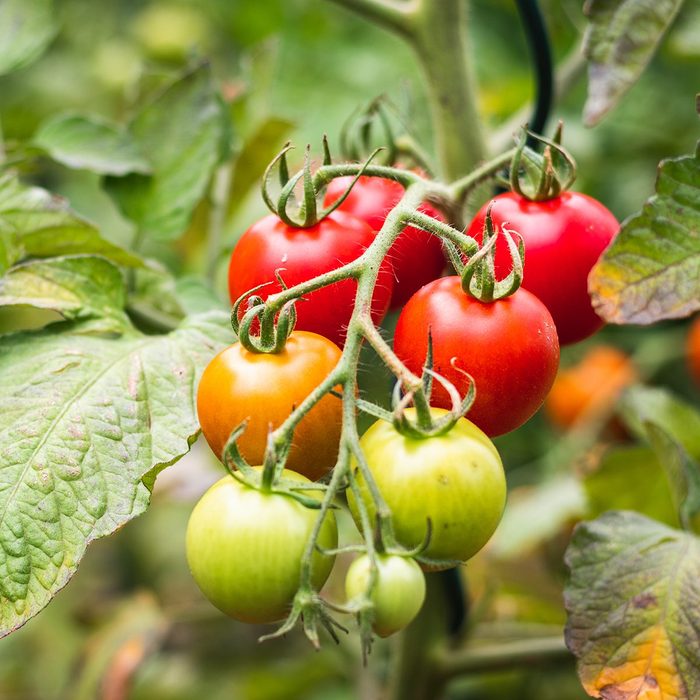
Planting in the Same Spot Every Year
All plants draw nutrients from the soil. Tomatoes especially draw a lot out of the dirt. To give tomatoes what they need, be sure you’re switching up where you plant. (You should be rotating all of your crops, actually!) If that’s not an option for you or you grow a tomato garden in containers, make sure that you replenish the soil with plant food, compost and fertilizer.
